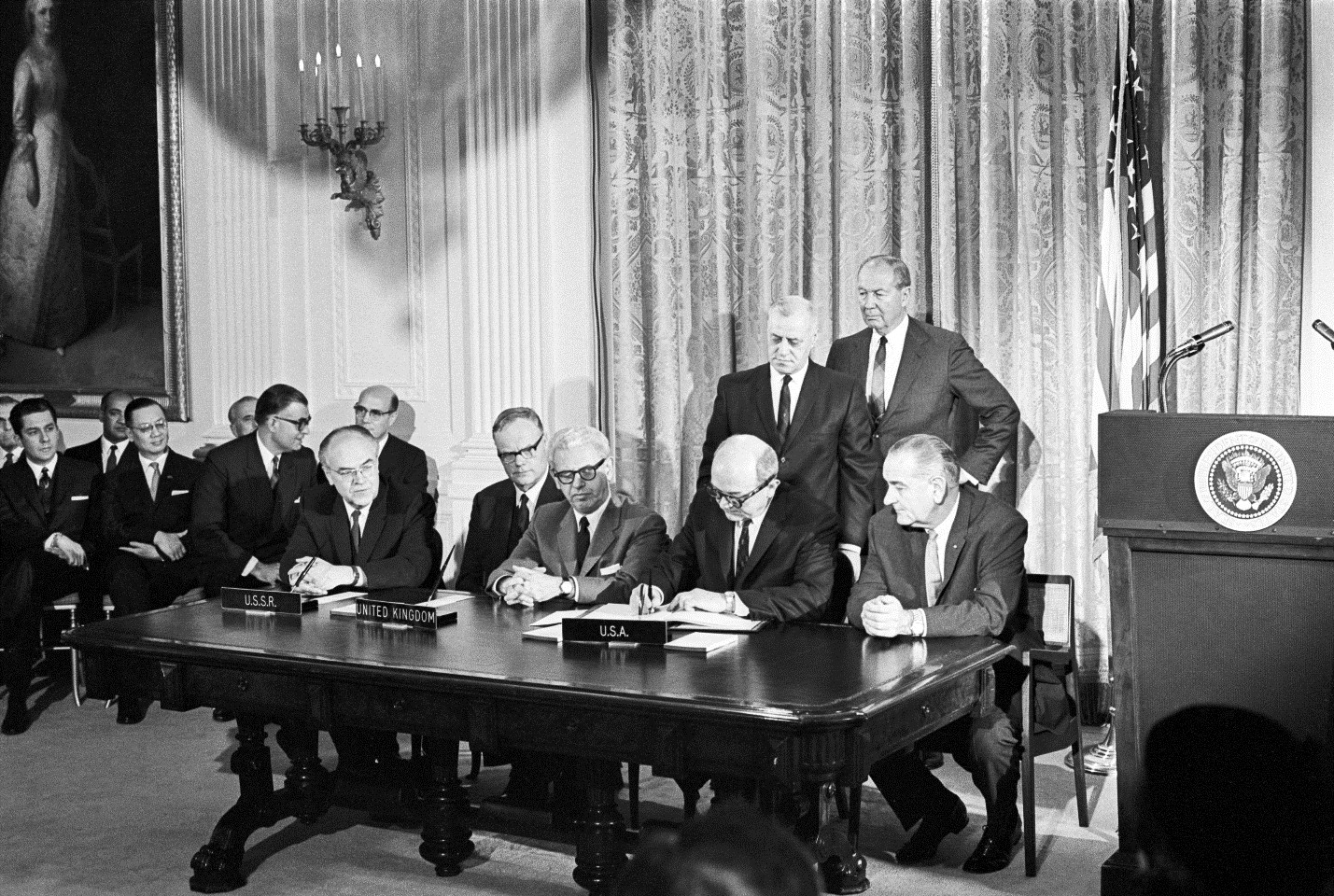Fifty years ago, on 10 October 1967, the Treaty of Principles Governing the Activities of States in the Exploration and Use of Outer Space, including the Moon and Other Celestial Bodies – more commonly known as the Outer Space Treaty – entered into force. 24 countries ratified this treaty in 1967, and since then, the number of parties to the treaty has increased to 105.

Left to Right (at table): USSR Ambassador to the USA Anatoly F. Dobrynin, Minister of State for Foreign Affairs and Permanent Representative of the United Kingdom to the UN Sir Patrick Dean; Permanent Representative of the United States to the UN Arthur J Goldberg, US Secretary of State Dean Rusk, and US President Lyndon B Johnson.
Photo credit: UN Photo
So, why is the Outer Space Treaty important?
The treaty, which serves as the basis of international space law, covers several topics, such as ensuring that nations are held responsible for their activities in space and are liable for damage caused by objects launched into space. It also prohibits nations from placing weapons of mass destruction in outer space. Furthermore, it states that the exploration and use of outer space is the province for all humankind, and no country can lay claim to the Moon or any other celestial body.
These concepts, that space is for everyone and should be used and explored peacefully, came at a pivotal time in the 1960s, when there was geopolitical tension and conflict, alongside calls for disarmament and peace. The treaty was progressive because it helped maintain peaceful and orderly exploration and use of outer space at that time, and now.
With the treaty in place, the exploration of space began to serve another purpose; space facilitated international cooperation. Nations that had political differences worked together for scientific progress and to better understand the universe around us. While we may disagree on Earth, what we can achieve together in space is inspiring. Space unites us towards common goals. This is what we call ‘space diplomacy’.
Half a century later, we at the United Nations Office of Outer Space Affairs (UNOOSA) – the main UN entity dealing with outer space – continue to uphold the principles of the treaty. We facilitate ongoing international cooperation on space matters, including by supporting the United Nations Committee on the Peaceful Uses of Outer Space.
We also work to ensure that all humankind benefits from space activities, particularly developing countries and non-space-faring nations. This includes helping countries to access and use space technology for sustainable development, such as monitoring and adapting to climate change, mapping the spread of diseases, or monitoring crops to ensure food security.
With so much of our lives now reliant on space technology, and the huge benefits that it brings to our societies now, and in the future, it is imperative that space continues to be the common domain of all humanity and is maintained for peaceful purposes. The Outer Space Treaty of 1967 is the foundation of these principles.
The Treaty’s 50th anniversary is an opportunity to remember the historical origins of the treaty, celebrate the international cooperation and achievements it has facilitated, and look ahead to an exciting future of space activities for the benefit of all humankind, for another 50 years and beyond. The Treaty is a commitment from the international community to preserve space peacefully, for all of us, and the generations to come.